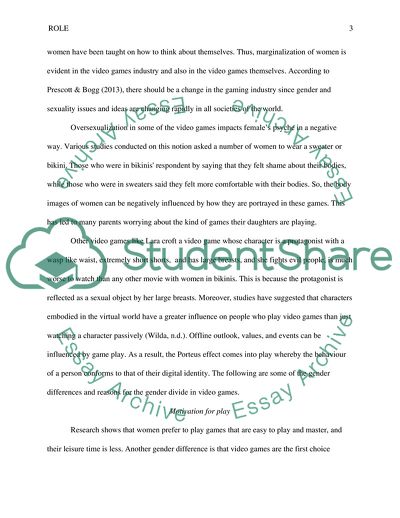Cite this document
(Role of Video Games in Feminism and Gender Equality Literature review Example | Topics and Well Written Essays - 2750 words, n.d.)
Role of Video Games in Feminism and Gender Equality Literature review Example | Topics and Well Written Essays - 2750 words. https://studentshare.org/gender-sexual-studies/1842462-how-video-games-play-a-part-in-feminism-and-gender-equality
Role of Video Games in Feminism and Gender Equality Literature review Example | Topics and Well Written Essays - 2750 words. https://studentshare.org/gender-sexual-studies/1842462-how-video-games-play-a-part-in-feminism-and-gender-equality
(Role of Video Games in Feminism and Gender Equality Literature Review Example | Topics and Well Written Essays - 2750 Words)
Role of Video Games in Feminism and Gender Equality Literature Review Example | Topics and Well Written Essays - 2750 Words. https://studentshare.org/gender-sexual-studies/1842462-how-video-games-play-a-part-in-feminism-and-gender-equality.
Role of Video Games in Feminism and Gender Equality Literature Review Example | Topics and Well Written Essays - 2750 Words. https://studentshare.org/gender-sexual-studies/1842462-how-video-games-play-a-part-in-feminism-and-gender-equality.
“Role of Video Games in Feminism and Gender Equality Literature Review Example | Topics and Well Written Essays - 2750 Words”. https://studentshare.org/gender-sexual-studies/1842462-how-video-games-play-a-part-in-feminism-and-gender-equality.


